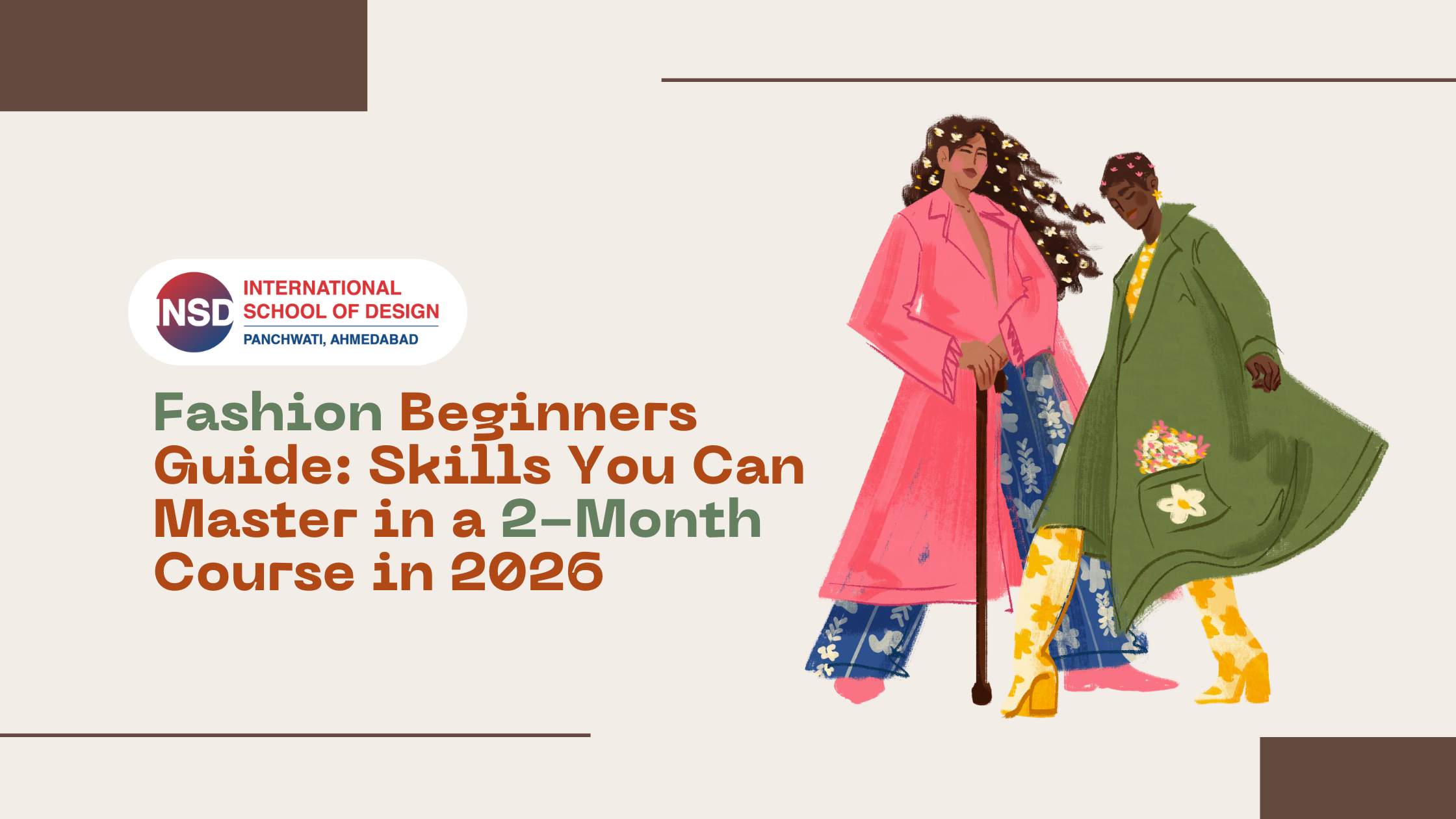Starting your fashion journey can feel both exciting and overwhelming. With so many paths, fashion design, styling, textile creation, digital design, it’s hard to know where to begin. If you’re aiming for 2026 admissions or want to try out fashion as a skill, a 2-month fashion design course is the perfect way to get hands-on exposure without a long-term commitment.
Short-term programs are designed to teach practical, industry-relevant skills quickly, helping you discover your strengths, build a mini portfolio, and gain confidence for your next steps.
Let’s explore what you can learn in just two months and how it can shape your creative journey.
Why a 2-Month Fashion Course Is Ideal for Beginners
A 2-month course focuses on skill-based learning rather than theory-heavy content. You’ll be actively creating, experimenting, and learning techniques that professionals use every day.
This short timeframe is perfect if you:
- Are exploring fashion before committing to a diploma or degree
- Want to understand what aspect of fashion excites you the most
- Need practical skills for portfolio building or freelance projects
- Want to start your creative journey alongside school or college
By the end of the course, you’ll have a clear sense of whether fashion is the right career path for you, and what areas you enjoy most.
Key Skills You Can Master in 2 Months
Even in a compact timeframe, a well-designed course can give you hands-on exposure to multiple aspects of fashion. Here’s what beginners typically learn:
1. Fashion Sketching and Illustration
Learn to translate ideas into sketches, understanding proportion, anatomy, and style. Sketching is the foundation of every fashion designer’s workflow.
2. Garment Construction Basics
Get practical experience with fabrics, stitching, and simple garment making. Understanding how clothes are built helps you design realistically.
3. Colour Theory and Fabric Knowledge
Learn how colours, textures, and patterns interact. This skill is essential for creating visually cohesive collections and mood boards.
4. Digital Fashion Tools
Modern designers use software for illustration, pattern making, and portfolio creation. A 2-month course introduces AI powered tools and digital platforms to enhance your creativity.
5. Styling and Trend Awareness
Understand how to combine clothing elements, accessories, and textures to create cohesive looks. You’ll also learn how to research trends and apply them creatively.
6. Mini Project Development
Work on small projects like mood boards, capsule collections, or concept sketches. These not only teach practical skills but also help you start building a portfolio for future admissions.
How Short-Term Courses Help You Understand Your Strengths
Many beginners think they know what they enjoy, but skills only become clear when practiced. During a 2-month course, you’ll quickly see what comes naturally:
- Are you more drawn to sketching or sewing?
- Do you prefer hands-on garment making or digital illustration?
- Are styling and trend research more exciting than pattern making?
This early clarity helps you decide whether to pursue a diploma, degree, or a career in a specific area of fashion.
Why Early Exposure Gives You an Advantage for 2026 Admissions
Fashion colleges look for students who are engaged, creative, and proactive. Completing a short-term course shows that you:
- Have real exposure to design concepts
- Understand basic tools and techniques
- Have some work ready for your portfolio
- Can approach creative tasks with confidence
Even a 2-month course gives you a head start, making your admission application stronger and giving you clarity about your future path.
The Role of AI and Digital Tools in Modern Fashion Courses
AI and design technology are changing the way fashion is taught:
- AI powered tools let you experiment with patterns, textures, and layouts faster than traditional methods.
- Chatbots and digital assistants provide instant guidance on techniques, style choices, and tools.
- Portfolio creation apps help you showcase your work professionally, even as a beginner.
Learning these tools early gives you an edge, whether you continue to a diploma or degree in 2026.
How a 2-Month Course Builds Confidence
Confidence comes from doing. Short-term courses allow beginners to:
- Understand fashion language and workflow
- Communicate ideas through sketches and projects
- Recognize what aspects of fashion they enjoy
- Develop a basic creative routine
Confidence is especially important for interviews, portfolio presentations, and when approaching real-world projects.
Who Should Take a 2-Month Fashion Course?
- Class 12 students exploring fashion careers
- Working professionals wanting to upskill creatively
- Aspiring fashion entrepreneurs testing concepts
- Anyone curious about design fundamentals
This course is flexible, practical, and fast, making it a perfect starting point for anyone interested in fashion in 2026.
How INSD Ahmedabad Supports Beginners in Fashion
At INSD Ahmedabad, students can enroll in 2-month fashion courses that cover everything from sketching and styling to digital design and mini project work. With hands-on guidance, industry-relevant training, and both online and offline options, INSD gives beginners:
- Practical exposure to fashion design fundamentals
- Early portfolio building opportunities
- Introduction to AI powered tools and digital platforms
- Mentorship to explore strengths and clarify career direction
It’s a supportive environment where creativity is nurtured and experimentation is encouraged.
Final Takeaway
A 2-month fashion design course is an ideal way for beginners to explore skills, gain confidence, and start building a portfolio ahead of 2026 admissions. You don’t need to commit to a full diploma right away; even a short course can provide the clarity and foundation you need to decide your next steps.
If you’re curious about fashion and want a practical, hands-on, and guided learning experience, INSD Ahmedabad offers short-term courses that help you discover your strengths, experiment with modern tools, and step confidently toward a creative future.


